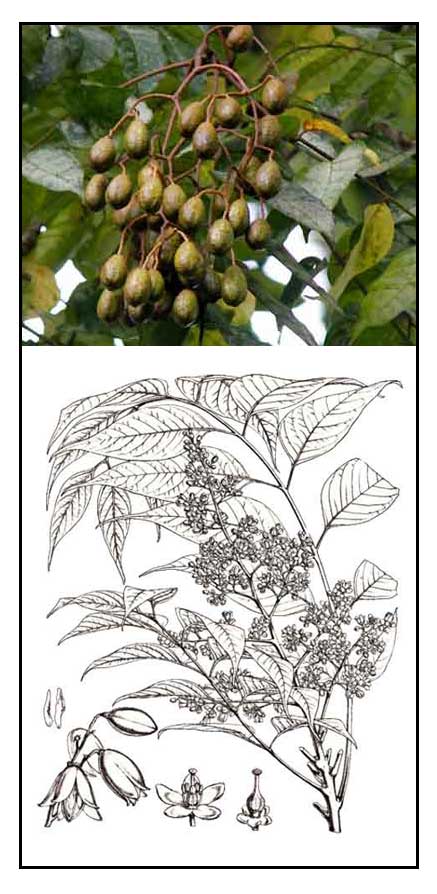
Family •
Meliaceae
Kalantas
Toona calantas Merr. & Rolfe.
PHILIPPINE CEDAR / PHILIPPINE MAHOGANY
Hong chun
| Scientific names | Common names |
| Cedrela calantas (Merr. & Rolfe) Burkill | Anipla (Iv.) |
| Cedrela febrifuga var. inodora (Hassk.) C.DC. | Batinan (Mt. Province) |
| Cedrela inodora Hassk. | Danigga (Ibn.) |
| Surenus inodora Kuntze   | Danupra (Ilk., Zambales) |
| Toona calantas Merr. & Rolfe           | Kantingen (Ilk., Sbl.) |
| Toona inodora (Hassk.) E.Reid & M.Chandler          | Lanigda (Bik.) |
| Toona paucijuga Merr.          | Lanigpa (Bik.) |
| Toona philippinensis Elmer.          | Lanigpa (Bik., S.L. Bis., C. Bis.) |
| Toona sureni var. inodora (Hassk.) Bahadur          | Mahugani (Tag.) |
| Toona sureni var. philippinensis (Elmer) Bahadur          | Porak (Ilk.) |
| Philippine mahogany (Engl.) | |
| Philippine cedar (Engl.) | |
| Red cedar (Engl.) | |
| Toona calantas Merr. & Rolfe is an accepted species. KEW: Plants of the World Online | |
| Referred to as Philippine mahogany, a name also applied to members of the unrelated genus Shorea. | |
| The genus Cedrela is included in the tribe Cedreleae of subfamily Sietenioideae, as is the genus Toona. All the easter species of Cedrela have been transferred to Toona. Cedrela differs from Toona by its prominent androgynophore with adnate petals and filaments, the cuplike calyx, the bigger and woodier capsule, and seedlings with entire leaflets. (World AgroForestry) | |
| Other vernacular names |
| CHINESE: Hong chun. |
| FRENCH: Cedre d'Indonesie. |
| HINDI: Toon. |
| JAVA: Soeren. |
| PORTUGUESE: Mogno-das-Filipinas. |
| TRADE NAME: Calantas. |
| OTHERS: Limpoga, Surian, Surian cedar. |
Botany • Flowering specimens are rare, but the fruits are characterized by the following features: Capsules large, (20–)28–40 mm long; columella 24–40 mm long, 7–15 mm broad; valves dark red to red-brown, smooth, 24–41 by 4–14 mm, lenticellate with numerous lenticels (0.1–1 mm diam.), which are often smaller and denser towards the base of the capsule. Seeds (14–)20–32 by 3.2–6 mm, wings unequal with broadly obtuse apices; seed body 4.2–10 by 1.5–3 mm. (Flora Malesiana) Distribution Constituents Studies |

 Gen info
Gen info


